A medição de caudal é um aspeto crucial de vários processos industriais, assegurando um controlo e gestão precisos dos líquidos. Entre os diferentes tipos de medidores de caudal disponíveis, os medidores de caudal electromagnéticos, ou medidores magnéticos, destacam-se pela sua precisão, fiabilidade e aplicabilidade em diversos contextos. Desde a sua invenção nos anos 50, os medidores de caudal electromagnéticos tornaram-se um padrão da indústria para medir o caudal de líquidos condutores. A natureza não intrusiva desta tecnologia, a ausência de peças móveis e a ampla compatibilidade com vários tipos de líquidos fazem dela a escolha preferida no tratamento de água, processamento químico, alimentos e bebidas e outras indústrias.
Se também estiver interessado em medidor de caudal de vórtice, aqui está um guia completo para medidores de caudal de vórtice.
Índice
How does a magnetic flow meter work?
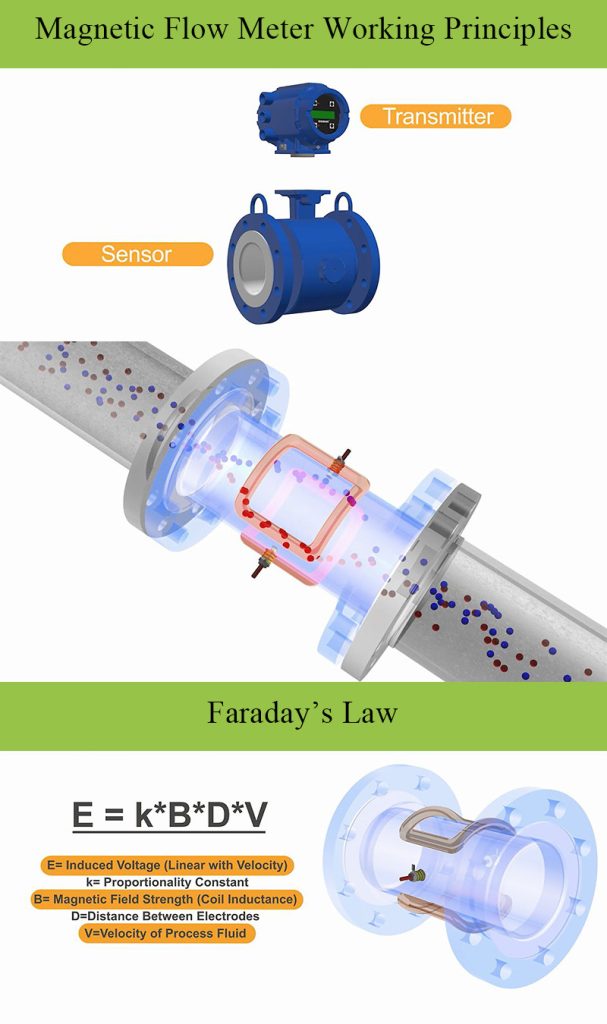
Electromagnetic flow meters, or magmeters, measure fluid flow using a combination of a transmitter and a sensor. The sensor is installed inline within the pipe and detects an induced voltage generated as the fluid passes through a magnetic field. This magnetic field is created by a set of coils in the meter, which are powered by the transmitter. As the fluid flows through the field, the positively and negatively charged particles in the fluid are separated, producing a voltage between a pair of electrodes. This induced voltage is then transmitted to the transmitter, which converts it into a measurable flow velocity. The underlying principle of this measurement is Faraday’s Law, expressed mathematically as E = k × B × D × V, where the induced voltage (E) is directly proportional to the fluid’s velocity (V) moving through the magnetic field (B). Using this velocity and the cross-sectional area of the pipe, the volumetric flow rate of the fluid can be accurately calculated.
Numa instalação típica de um caudalímetro eletromagnético:
- Structure: O medidor de caudal consiste numa secção de tubo não magnético e não condutor (conhecido como tubo de caudal), muitas vezes feito de aço inoxidável ou outros materiais duráveis, revestido com um material isolante como PTFE ou borracha. No interior do tubo, existem dois eléctrodos colocados diametralmente opostos um ao outro. Estes eléctrodos entram em contacto com o líquido que flui.
- Magnetic Field Generation: As bobinas que rodeiam o tubo de fluxo geram um campo magnético perpendicular à direção do fluxo do fluido. Quando o líquido condutor se move através deste campo magnético, é induzida uma força electromagnética (fem) entre os eléctrodos.
- Voltage Measurement: A tensão induzida é captada pelos eléctrodos e enviada para um transmissor, que converte este sinal de tensão num caudal utilizando a equação derivada da Lei de Faraday: E = k × B × D × V em que E é a tensão induzida, k é uma constante, B é a intensidade do campo magnético, D é o diâmetro interno do tubo e V é a velocidade do líquido. Dado que B e D são constantes para um dado medidor de caudal, a tensão E é diretamente proporcional à velocidade do fluido V.
- Flow Rate Calculation: O transmissor processa o sinal de tensão e fornece um caudal volumétricoque é depois visualizada numa interface digital ou integrada num sistema de controlo.
- Zero Stability: Uma das principais caraterísticas dos contadores magnéticos é a sua estabilidade zero. Se não houver fluxo, a tensão induzida deve ser idealmente zero. Esta caraterística torna os contadores magnéticos excecionalmente precisos, uma vez que qualquer sinal de tensão em condições de ausência de fluxo é normalmente tratado como ruído e calibrado.
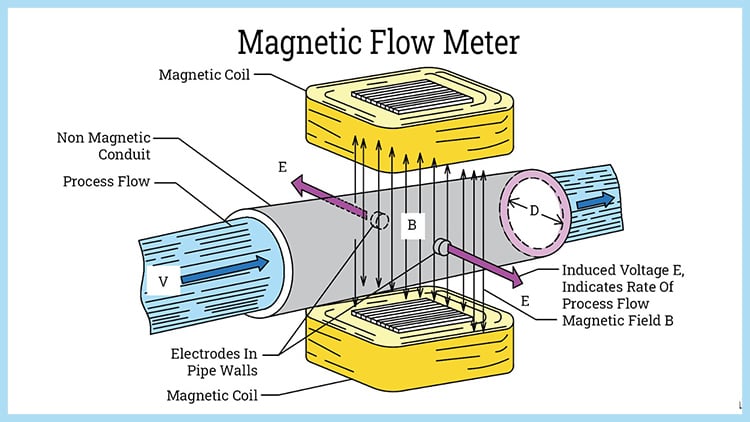
Vantagens dos medidores de caudal electromagnéticos
- High Accuracy and Precision: Os medidores de caudal electromagnéticos oferecem níveis de precisão elevados, frequentemente entre ±0,2% e ±0,5% da leitura, o que pode ser crítico em aplicações em que as medições precisas são essenciais, como na dosagem de produtos químicos ou no fabrico de produtos farmacêuticos.
- Sem partes móveis: A ausência de peças móveis no interior do tubo de fluxo minimiza o risco de desgaste mecânico, resultando em menores custos de manutenção e maior durabilidade. Este design também reduz as hipóteses de perda de pressão, tornando-os altamente eficientes.
- Vasta gama de aplicações: Os medidores magnéticos são versáteis e podem ser utilizados para vários tipos de fluidos condutores, incluindo lamas, água suja, produtos químicos corrosivos e fluidos viscosos. Esta ampla aplicabilidade torna-os ideais para indústrias como o tratamento de águas residuais, mineração e processamento de alimentos e bebidas.
- Bi-directional Measurement Capability: Estes medidores podem medir o caudal em ambas as direcções, o que é valioso em aplicações em que a direção do caudal pode mudar ou em que é necessário monitorizar várias direcções.
- Insensitive to Fluid Properties: Os caudalímetros magnéticos não são afectados por alterações na densidade, viscosidade, temperatura ou pressão do fluido. Esta vantagem assegura medições consistentes e fiáveis, mesmo em condições de processo variáveis.
- Easy to Maintain: Sem componentes mecânicos e com o mínimo de peças que entram em contacto com o líquido, a manutenção é simples. A calibração periódica e a limpeza dos eléctrodos são muitas vezes tudo o que é necessário para manter os medidores magnéticos operacionais.
Problems of Magnetic Flow Meters
- Limited to Conductive Fluids: Uma das principais limitações dos medidores de fluxo electromagnéticos é a sua incapacidade de medir o fluxo de fluidos não condutores, como óleos, hidrocarbonetos e gases. O fluido deve ter uma condutividade mínima (normalmente acima de 5 µS/cm) para que o medidor funcione corretamente.
- Sensitive to Air Bubbles and Conductive Solids: Embora os contadores magnéticos lidem bem com lamas, a presença de bolhas de ar ou de sólidos condutores pode conduzir a ruído de sinal e afetar a precisão da medição. Por conseguinte, é necessário ter cuidado para garantir que o caudal se mantém livre de grandes bolsas de ar.
Comum Tipos de medidores de caudal electromagnéticos
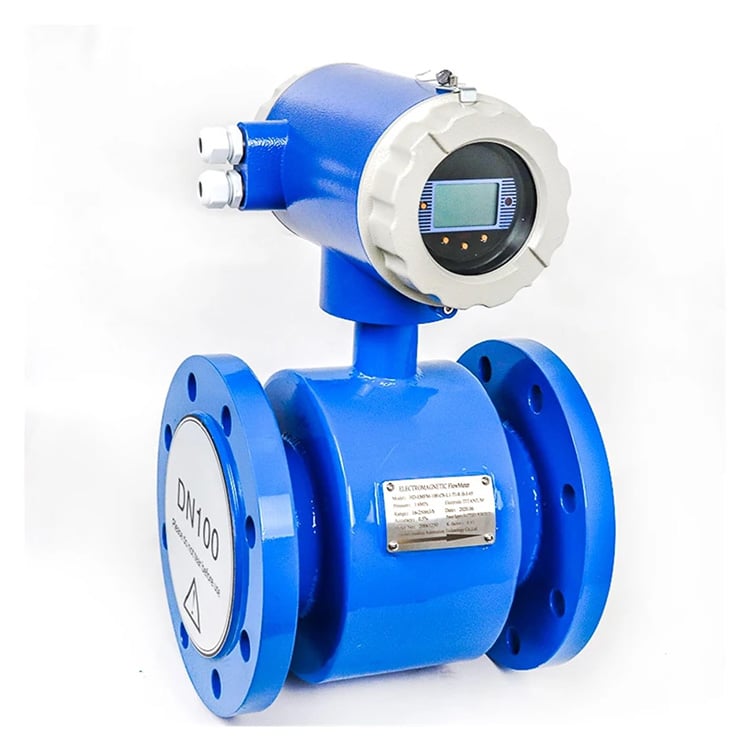
1. Medidores de caudal electromagnéticos em linha: Estes são instalados diretamente na tubagem e oferecem a maior precisão e fiabilidade. Existem em vários tamanhos para corresponder a diferentes diâmetros de tubagem e são normalmente utilizados em indústrias que requerem medições de caudal precisas, tais como estações de tratamento de água e instalações de processamento de produtos químicos.
2. Medidores de caudal electromagnéticos de inserção: Ideal para tubagens maiores onde os medidores em linha seriam proibitivamente caros. Os medidores de inserção têm uma sonda que é inserida no tubo e mede a velocidade do fluxo num ponto específico. Embora ofereçam uma precisão ligeiramente inferior à dos medidores em linha, são mais económicos para tubagens de grande diâmetro e podem ser instalados sem encerrar o processo.
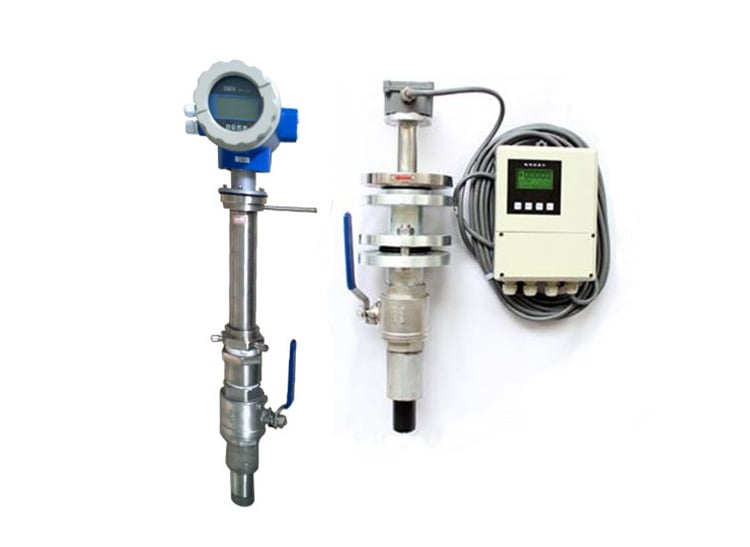
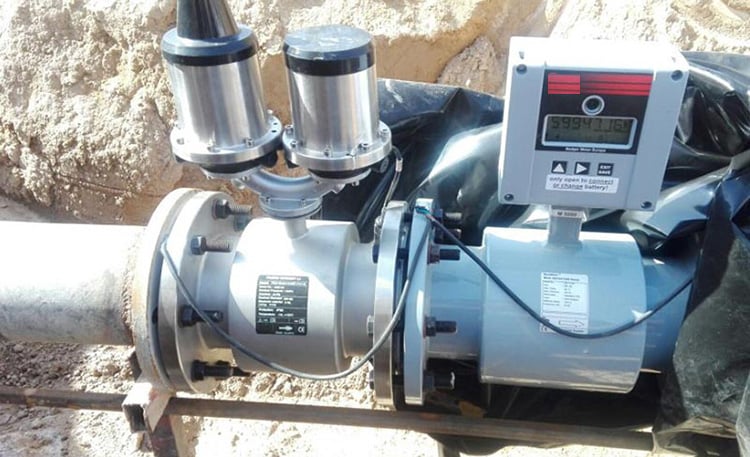
3. Medidores de caudal electromagnéticos alimentados por bateria: Concebidos para aplicações em que a disponibilidade de energia é uma preocupação, como sistemas remotos de distribuição de água e irrigação. Estes contadores magnéticos oferecem portabilidade e facilidade de instalação, mas podem ter limitações no registo de dados e no funcionamento contínuo.
4. Medidores de caudal electromagnéticos sanitários: Estes medidores foram concebidos para cumprir os rigorosos requisitos de higiene das indústrias alimentar, de bebidas e farmacêutica. Apresentam superfícies lisas, encaixes de libertação rápida e materiais que podem suportar limpezas frequentes, garantindo a conformidade com as normas da indústria como 3A ou EHEDG.
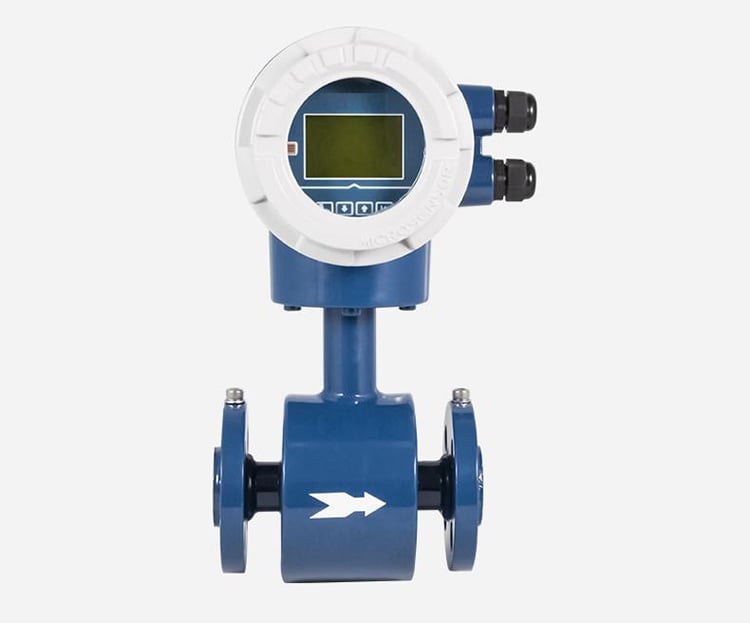
How to Choose the Right Magnetic Flow Meter
Compreender as caraterísticas do meio medido
The operating principle of an electromagnetic flowmeter relies on the conductivity of the medium. The properties of the medium directly affect the flowmeter’s performance, accuracy, and material selection for linings and electrodes. The primary factors to consider are:
- Conductivity Requirements. Os medidores de caudal electromagnéticos requerem que o meio tenha um determinado nível de condutividade. Normalmente, os medidores de caudal electromagnéticos são concebidos para medir fluidos com uma gama de condutividade de 10-⁴ S/cm para 5×10-⁶ S/cm.
- Medium Composition and Gas Bubbles. If the medium contains magnetic particles, such as iron filings, it may interfere with the flowmeter’s magnetic field, leading to measurement errors. In such cases, flowmeters with magnetic shielding capabilities are recommended. The presence of bubbles in the fluid can cause measurement errors, as bubbles will contribute to the total flow. To mitigate this, a bubble separation device or a flowmeter capable of compensating for bubbles can improve accuracy.
- Sediment and Scaling. Certain media, such as water with high calcium or magnesium content, may cause sediment or scale to accumulate on the pipe lining or electrodes, affecting measurement accuracy. Self-cleaning electrodes or flowmeters with anti-scaling features are recommended.
- Hygiene and Food-Grade Requirements. Em indústrias como a alimentar, a farmacêutica e a química, os medidores de caudal têm de cumprir normas de higiene específicas. Os materiais utilizados no medidor de caudal devem estar em conformidade com as normas de qualidade alimentar ou GMP, como o aço inoxidável, PTFE ou PFA, garantindo que o medidor de caudal não reage com o meio e é fácil de limpar.
- Corrosion Resistance. For corrosive media, such as acidic, alkaline liquids or chemical flow meter solutions, the corrosion resistance of the flowmeter lining and electrodes is critical. Materials like PTFE, PFA, or ceramic linings are recommended to ensure long-term durability, while electrodes made of corrosion-resistant materials like tantalum or platinum will help maintain measurement accuracy and stability.
Parâmetros das condições de funcionamento
- Temperature and Pressure. Temperature and pressure directly influence the performance and lifespan of electromagnetic flowmeters. For high-temperature fluids, flowmeters should be selected with linings that can withstand high temperatures, such as PTFE or PFA. For high-pressure environments, flowmeters made of pressure-resistant materials are required to ensure safety and prevent leakage. In high-pressure systems, flanges, bolts, and other connection components must have sufficient pressure ratings and be securely installed to avoid joint leaks.
- Pipe Diameter and Flow Range Matching. O diâmetro do medidor de caudal eletromagnético deve corresponder ao diâmetro do tubo para garantir um funcionamento adequado dentro da sua gama de caudal efetivo. Um medidor de caudal com um diâmetro demasiado grande ou demasiado pequeno pode afetar a precisão da medição. Para aplicações de baixo caudal ou baixa velocidade, recomenda-se normalmente a seleção de um medidor de caudal com um diâmetro ligeiramente mais pequeno para melhorar a sensibilidade e a precisão.
- Flow Velocity and Full-Scale Flow. The measurement accuracy of an electromagnetic flowmeter remains stable within a specific flow velocity range, typically 1 to 10 m/s for liquids. In practice, flow velocities above 5 m/s may cause wear on the flowmeter lining, especially if softer materials like rubber are used. For low-flow (below 1 m/s) applications, reducing the flowmeter’s diameter can help increase flow velocity and improve signal strength and accuracy.
Escolher o nível de precisão correto
Electromagnetic flow meters generally offer an accuracy range of ±0.5% to ±1% of the measured value for standard models. High-precision models can achieve ±0.2% or better, depending on the manufacturer and application conditions. Accuracy may also vary with factors such as flow profile, pipe condition, and fluid conductivity.
Aplicações dos medidores de caudal electromagnéticos
Os medidores de caudal electromagnéticos são amplamente utilizados em indústrias onde a medição do caudal de líquidos condutores é crucial para o controlo de processos, faturação ou monitorização ambiental. Algumas aplicações notáveis incluem:
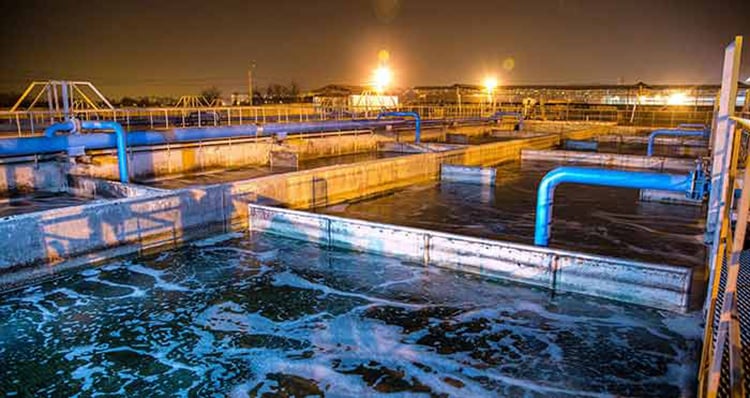
Tratamento de água e de águas residuais: Nos sistemas de água municipais e industriais, os contadores magnéticos são utilizados para medir água bruta, água tratada, lamas e produtos químicos. A sua resistência à abrasão dos sólidos torna-os ideais para aplicações de águas residuais.
- Sistemas agrícolas e de irrigação: Os contadores magnéticos alimentados por bateria são utilizados em locais agrícolas remotos para medir o consumo de água para uma gestão eficiente da irrigação.
Indústrias químicas e petroquímicas: Os medidores Mag medem produtos químicos agressivos, ácidos, bases e líquidos corrosivos. O seu método de medição não intrusivo assegura a compatibilidade com substâncias corrosivas e viscosas.

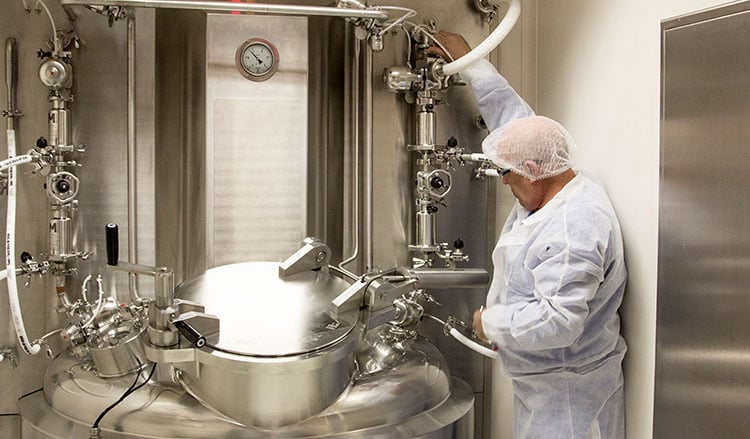
Indústria farmacêutica: A medição exacta e estéril do caudal é fundamental no fabrico de produtos farmacêuticos, onde os medidores magnéticos fornecem fiabilidade e precisão para o manuseamento de líquidos e processos de adição de químicos.
- Indústria mineira e indústria da pasta e do papel: Na indústria mineira, os medidores magnéticos medem os fluxos de lamas com partículas em suspensão, enquanto que na indústria da pasta e do papel, monitorizam o fluxo de pasta, produtos químicos e águas residuais.
Indústria de alimentos e bebidas: Os medidores de caudal electromagnéticos são utilizados na produção de bebidas, produtos lácteos e outros consumíveis. Os medidores garantem uma dosagem precisa e um controlo de qualidade, respeitando as normas de higiene com modelos de grau sanitário.
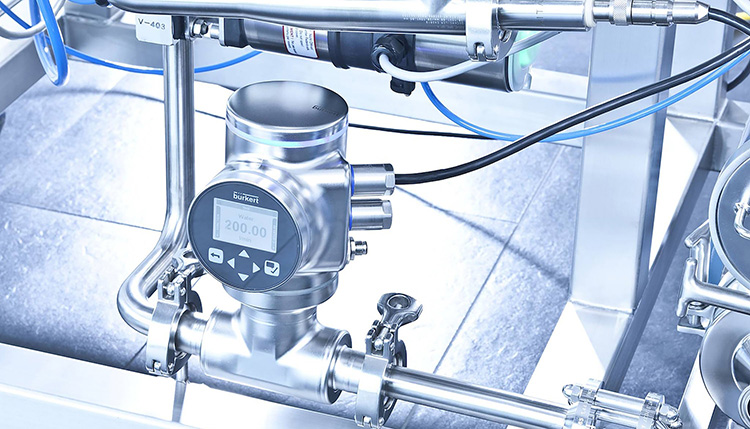
Os medidores de caudal electromagnéticos são ferramentas inestimáveis em ambientes industriais modernos, onde a medição precisa de líquidos condutores é fundamental. As suas vantagens únicas, como a elevada precisão, a ausência de peças móveis e a vasta gama de aplicações, fazem deles a escolha preferida de muitas indústrias. No entanto, as suas limitações, como a incapacidade de medir fluidos não condutores e custos iniciais mais elevados, devem ser consideradas ao selecionar a tecnologia de medição de caudal adequada. Ao compreender os princípios de funcionamento, as vantagens, as desvantagens, as aplicações e os tipos de medidores de caudal electromagnéticos, as indústrias podem tomar decisões informadas que melhoram a eficiência e a fiabilidade dos processos.

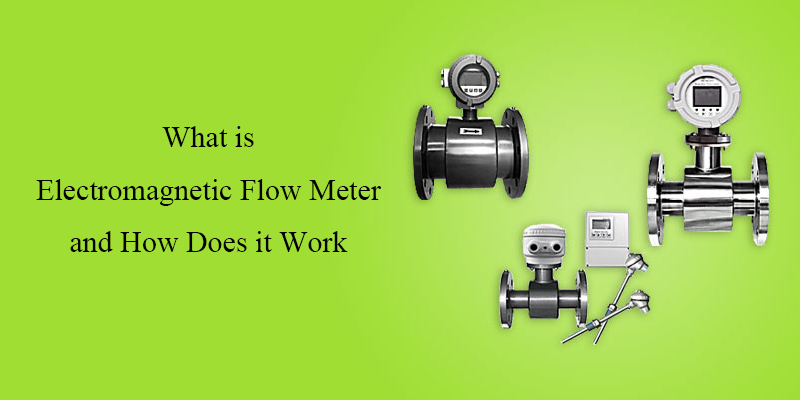
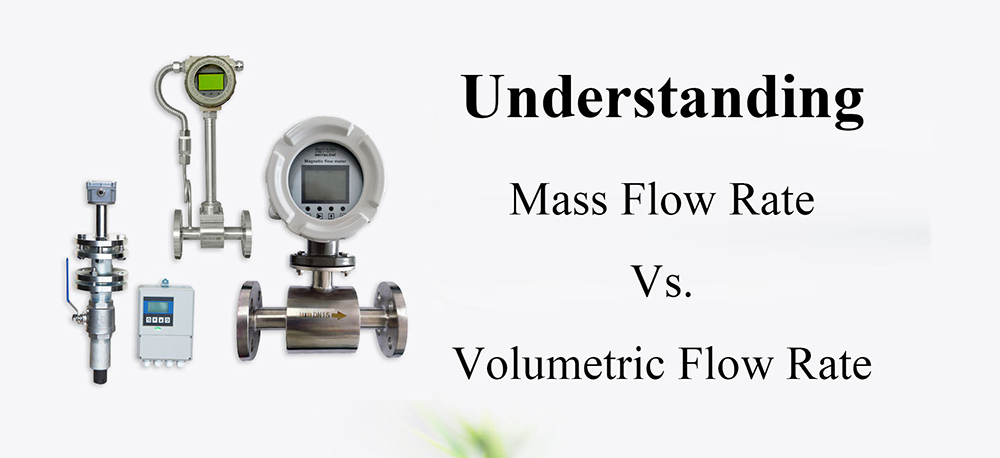
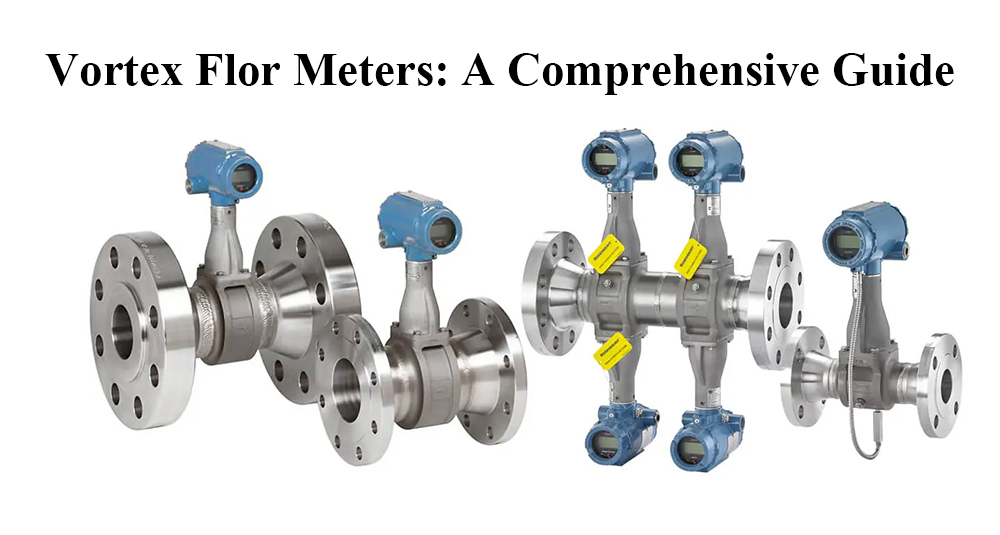
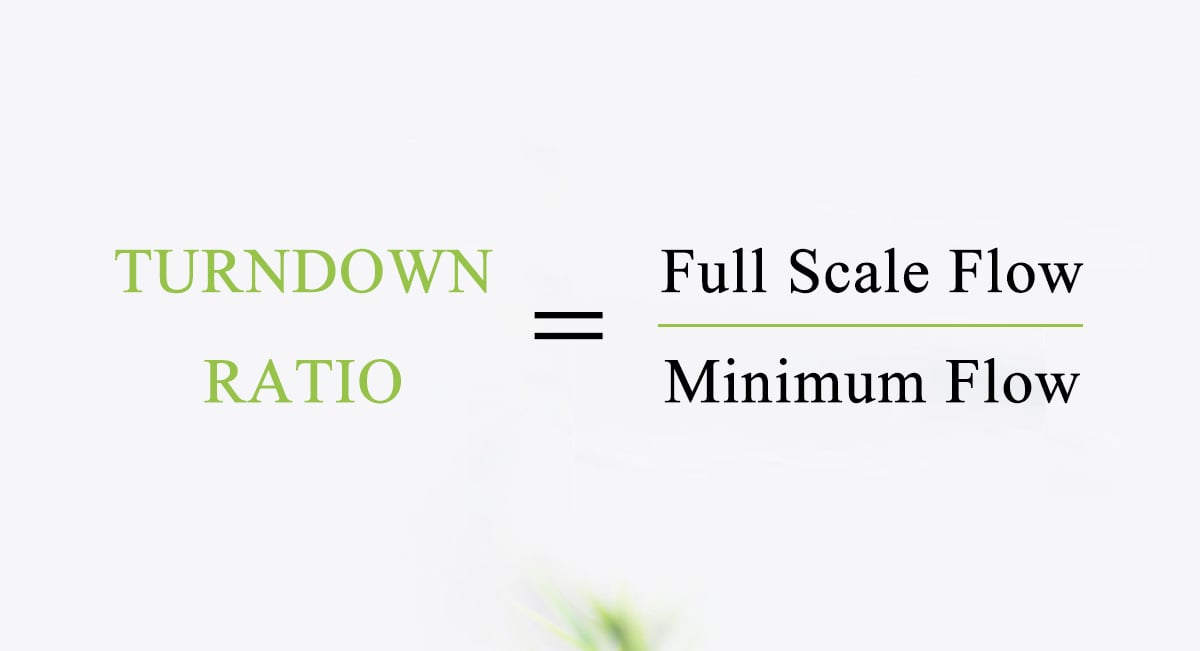
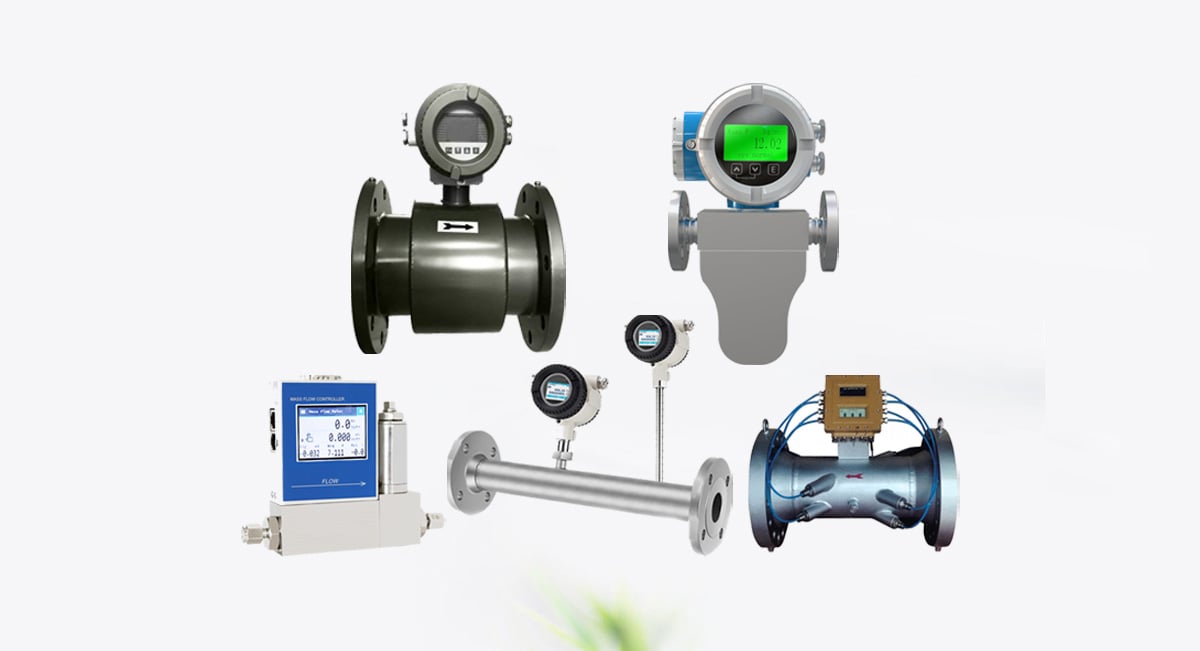
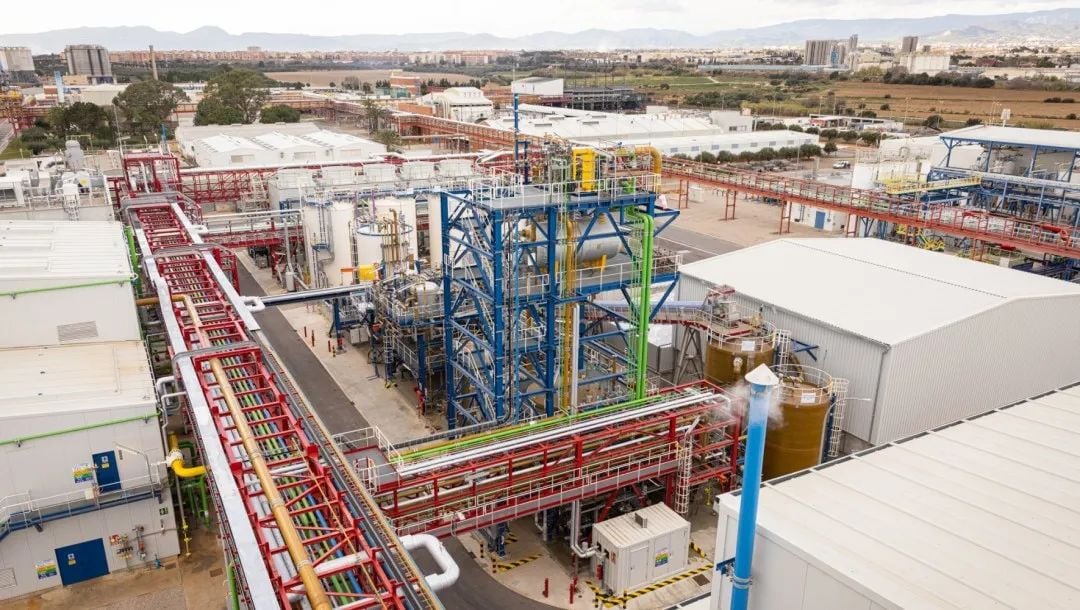
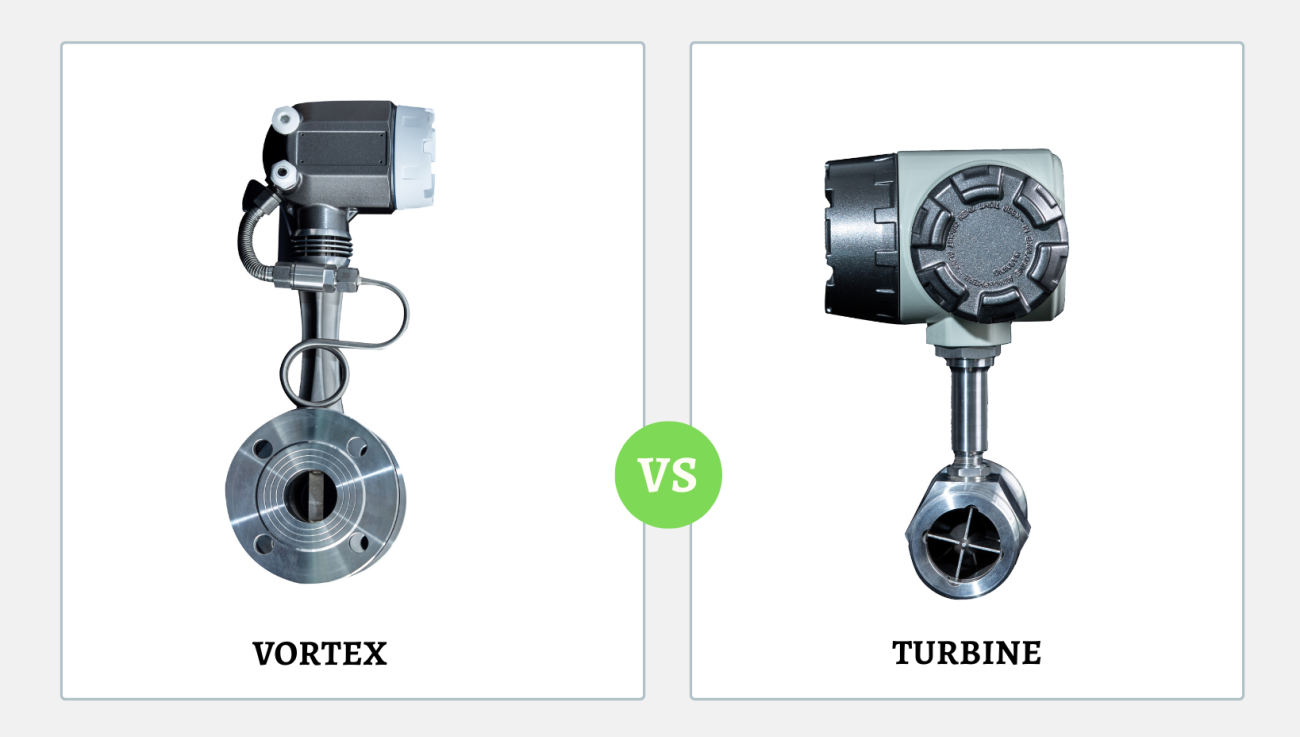
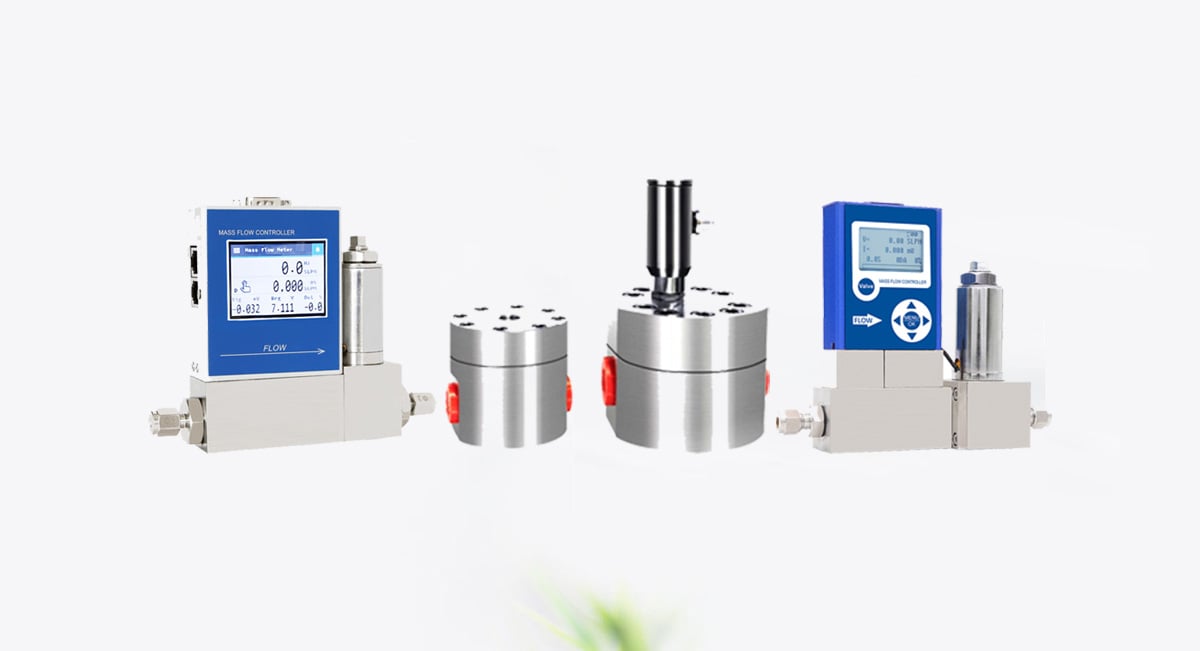
Deixar um comentário